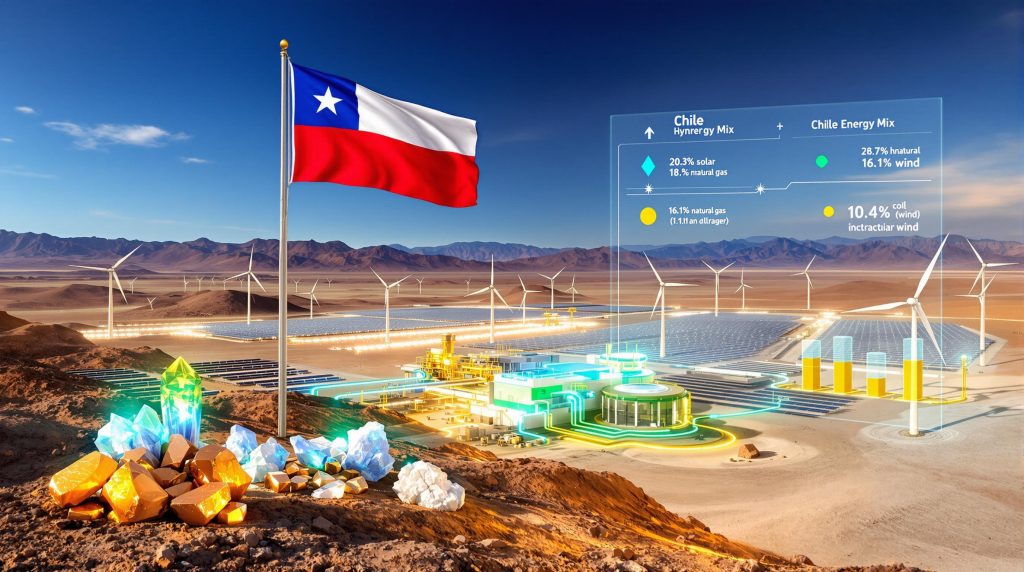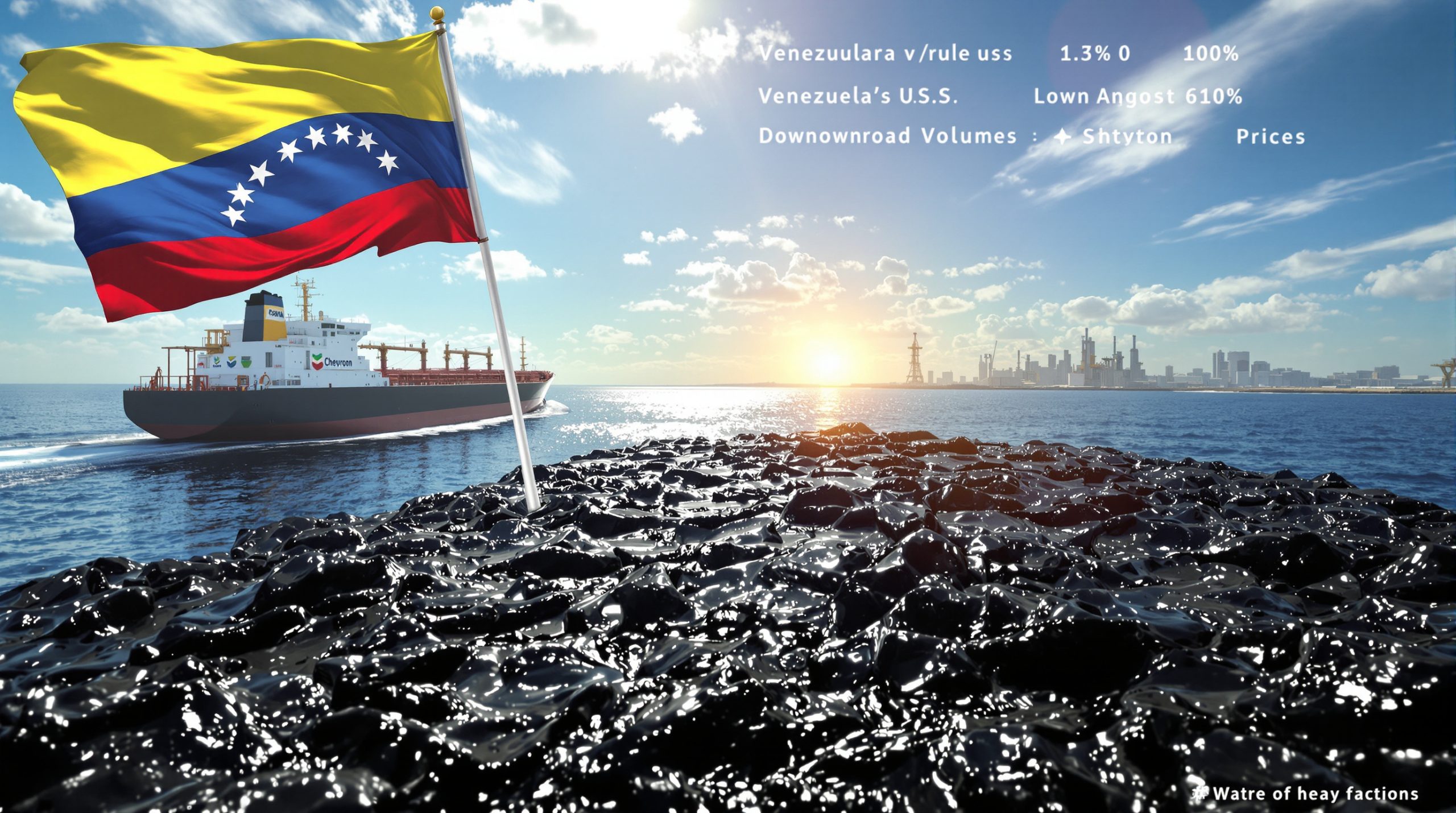Chile's Energy Transition: Powering Mining and Sustainable Development
Chile stands at the crossroads of a unique energy revolution—balancing its position as a mining powerhouse with ambitious climate goals. This transition represents not just a national priority but a global case study in how resource-rich nations can pivot toward sustainable development while maintaining economic strength.
How Is Chile Balancing Mining Operations With Renewable Energy Goals?
The Dual Challenge of Energy-Intensive Mining and Climate Commitments
Chile faces a distinctive balancing act as both a global mining powerhouse and a renewable energy pioneer. The nation's economy has long been anchored by its mineral wealth, but this creates significant energy demands that must be reconciled with climate commitments.
Chile accounts for 22% of global copper production and approximately 24% of global lithium production, making it an indispensable supplier of the critical minerals transition driving the global energy transformation. These impressive figures underscore the country's outsized importance in global supply chains.
Mining operations consume substantial amounts of energy—from extraction to processing and transportation—creating a carbon footprint that must be addressed as the nation pursues ambitious climate targets.
The strategic integration of renewable energy into mining operations represents both a necessity and an opportunity for Chile to maintain its competitive position while demonstrating leadership in sustainable development.
Chile's Strategic Position in Critical Minerals Supply
Chile maintains its position as the world's largest copper producer, with production representing over one-fifth of global output. This dominance gives the country significant influence in global commodity markets and provides economic stability.
The country holds the second position globally in lithium production, controlling nearly a quarter of worldwide output. This positions Chile as a key player in the supply of materials essential for battery technology and energy storage solutions.
William Adams, head of base metals and battery research at Fastmarkets, notes: "In places like the Atacama in Chile, there is every opportunity to build solar power generation plants, as it is one of the driest places on Earth, suggesting blue skies, which would be good for solar power generation."
The Atacama region offers unique advantages for sustainable mineral extraction. According to Jose Hofer, consultant and advisor of lithium at SC Insights: "Salar de Atacama in Chile has a formal advantage because it has the best operation rate, highest concentration of lithium, lowest energy use and limited use of water."
What Makes Chile's Renewable Energy Profile Unique?
Current Energy Generation Mix
Chile has made remarkable progress in transforming its energy matrix in recent years. According to 2023 International Energy Agency data, Chile's electricity generation comprises:
- 26% hydroelectric power
- 20.3% solar photovoltaic
- 18.6% natural gas
- 16.1% coal
- 10.4% wind
- 6.3% biofuels
- 1.8% oil
This diverse mix demonstrates the country's commitment to developing multiple renewable sources rather than relying on a single technology.
By December 2024, Chile achieved approximately 79% of electricity generation from renewable sources according to Generadoras de Chile. This impressive figure represents one of the fastest energy transitions globally and provides a strong foundation for further progress.
Ambitious Climate and Energy Targets
Chile has established a goal to convert 70% of total energy consumption to renewables by 2030, as reported by the World Economic Forum. This target goes beyond the electricity sector to include transportation, heating, and industrial processes.
The country has committed to achieving carbon neutrality by 2050, aligning with global efforts to limit climate change. This pledge represents a comprehensive national strategy affecting all sectors of the economy.
These targets are supported by broad political consensus and innovative technological approaches, creating stability for long-term planning and investment.
The transition strategy represents a significant shift from Chile's historical reliance on fossil fuels, particularly imported oil and coal, toward harnessing its abundant natural renewable resources.
Natural Advantages for Renewable Development
The Atacama Desert provides ideal conditions for solar energy development with consistent sunlight exposure throughout the year. The region receives some of the world's highest solar radiation levels, making it exceptionally productive for photovoltaic installations.
Claudia Cook, senior analyst for lithium at Fastmarkets, explains: "The hot and arid salt flats, called salars, in Chile result in high evaporation rates and provide large open spaces, both critical components of lithium extraction from traditional evaporation ponds."
Wide open spaces in salt flat regions accommodate large-scale renewable installations without competing with agricultural or urban land uses. This availability of land helps reduce the cost and complexity of developing new renewable capacity.
High evaporation rates in arid regions benefit both lithium extraction and certain renewable technologies. This creates natural synergies between the mining sector and renewable energy development.
Geographic diversity enables development of varied renewable energy sources, including strong wind resources along coastal and mountainous areas and substantial hydroelectric potential in the southern regions.
How Are Mining Companies Adapting to Energy Transition Requirements?
Sustainable Mining Practices and Energy Integration
Mining companies operating in Chile are implementing strategies to reduce carbon and environmental footprints across their operations. These initiatives include energy efficiency improvements, electrification in mining equipment, and integration of renewable energy sources.
The Atacama region offers exceptional potential for on-site solar power generation to support mining operations. The consistent sunlight and minimal cloud cover create ideal conditions for reliable solar electricity production.
Companies are exploring ways to minimize the carbon impact of global supply chains that transport Chilean minerals to international markets. This includes optimizing shipping routes, considering rail transportation options, and investigating low-carbon transportation technologies.
Salar de Atacama operations benefit from natural advantages including high lithium concentration and lower energy requirements compared to other extraction methods. These characteristics provide a foundation for developing more sustainable mining practices.
Renewable Energy Adoption in Lithium Production
Research from Fastmarkets indicates 71% of operational lithium producers with ESG reporting used renewable energy in 2023. This demonstrates growing industry recognition of the importance of sustainable energy sources.
The average ratio of renewable energy use to total energy consumption was approximately 18%, indicating significant room for growth while showing meaningful progress toward cleaner operations.
Half of renewable energy use was generated on-site, with 15% purchased and 15% using a combined approach. On-site generation reduces transmission losses and provides greater energy security for remote operations.
Despite progress, lithium operations still show high dependency on fossil fuels, with diesel, natural gas, and coal accounting for approximately 92% of total fuel consumption. This highlights the scale of the challenge ahead in fully transitioning these operations.
Corporate Commitments to Renewable Energy
Half of ESG-reporting lithium producers have established renewable energy goals, demonstrating industry acknowledgment of the importance of energy transition. These commitments vary in ambition and timeline but represent a significant shift in corporate strategy.
Major producers operating in Chile have made significant commitments to renewable energy:
- Albemarle has committed to 100% renewable electricity for facilities in Chile and Kings Mountain
- SQM aims to substantially increase renewable energy in its global energy mix by 2030
Claudia Cook of Fastmarkets notes: "Both companies operating in Chile [SQM and Albemarle] are seen as being among the most sustainable in the world; this is in large part due to the fact that they are brine projects… They are seen as being one of the most sustainable due to their measuring and reporting of emissions, as well as joining the [Initiative for Responsible Mining Assurance's] IRMA Standard for Responsible Mining."
These commitments align with broader mining industry evolution toward decarbonization and sustainable production practices that respond to increasing customer and investor demands for responsibly sourced materials.
What Role Does Green Hydrogen Play in Chile's Energy Future?
Strategic Importance in National Energy Planning
Green hydrogen occupies a central position in Chile's energy transition and mining strategy. The country recognizes hydrogen's potential to address sectors where direct electrification is challenging, such as heavy industry and certain transportation applications.
The World Economic Forum notes: "Chile's National Green Hydrogen Strategy calls for incorporating green hydrogen into the country's mining and commodity sectors, as well as other carbon-reliant local supply chains. The strategy estimates that Chilean green hydrogen could be among the most affordable in the world due to its favorable renewable energy environment."
Chile's approach focuses on integrating hydrogen into mining, commodity sectors, and carbon-intensive supply chains where it can have the greatest impact on emissions reduction while building on existing industrial expertise.
The country's favorable renewable energy environment positions it to produce some of the world's most affordable green hydrogen, creating potential export opportunities alongside domestic applications.
International Support and Investment
The Green Hydrogen Fund for Chile represents a collaborative European initiative supporting hydrogen development across multiple sectors. This international partnership demonstrates global recognition of Chile's potential in the hydrogen economy.
Key partners include the European Investment Bank, German development bank KfW, and the EU delegation in Chile. This multinational approach brings diverse expertise and resources to accelerate hydrogen deployment.
The initiative will support diverse hydrogen projects from water desalination to storage and transport infrastructure. This comprehensive approach addresses the full hydrogen value chain rather than focusing solely on production.
The European Investment Bank has provided a €100 million ($117.14 million) loan to support private sector projects in green hydrogen development. This financing represents a significant vote of confidence in Chile's hydrogen strategy.
Mining Sector Applications
Green hydrogen offers potential applications in mining operations to reduce fossil fuel dependence, particularly for heavy machinery and high-temperature processes that are difficult to electrify directly.
The technology could help address high energy consumption in processing operations, particularly in copper refineries and smelters that currently rely heavily on fossil fuels.
Integration with Chile's critical minerals production creates synergies for global green transition, potentially enabling "green premium" products that command higher prices in environmentally conscious markets.
Development could benefit not only mining operations but broader resource sectors and supply chains, creating economies of scale that accelerate hydrogen adoption across multiple industries.
What Infrastructure Challenges Must Chile Overcome?
Transmission Grid Expansion Needs
Urgent expansion of Chile's transmission infrastructure is required to accommodate growing renewable projects, particularly in northern regions where solar resources are abundant but demand centers are distant.
Current bottlenecks limit the integration of new renewable capacity and restrict energy delivery to demand centers, creating inefficiencies and potentially stranding assets.
The 2025 Energy Transition Law introduces new obligations for transmission companies to address these challenges and accelerate grid modernization. This regulatory framework aims to unlock renewable potential through strategic infrastructure development.
Regional production challenges due to limited electricity transmission require comprehensive solutions that balance immediate needs with long-term system planning. Jose Hofer of SC Insights notes that "Chile is also facing a crisis in terms of permitting, which influences renewable sources development."
Permitting and Regulatory Hurdles
Chile faces challenges in permitting processes that impact renewable energy development timeframes and costs. Streamlining these processes while maintaining environmental protections represents a key priority.
Regulatory frameworks must balance environmental protection with energy development needs, particularly in sensitive areas like the Atacama Desert where both mining and renewable projects compete for resources.
Mining companies must navigate evolving permitting standards while meeting decarbonization commitments, creating complex compliance challenges that require sophisticated management approaches.
Streamlined processes are needed to accelerate renewable integration while maintaining standards that protect Chile's unique ecosystems and communities affected by development projects.
Energy-Intensive Technology Implementation
Direct Lithium Extraction projects from major producers will significantly increase energy consumption, creating new demands on an evolving energy system. These technologies promise more efficient extraction but at the cost of higher energy requirements.
Jose Hofer from SC Insights highlights that "The DLE projects [from] SQM and Albemarle in Chile, for example, will increase 15 times the energy consumption in Salar do Atacama. Another additional transmission line will be necessary to supply both projects."
SQM and Albemarle DLE projects in Salar de Atacama will require substantial new energy infrastructure to support their operations. This represents both a challenge and an opportunity for renewable integration.
Balancing technological innovation with energy availability represents a key challenge for Chile's mining sector as it pursues both productivity improvements and sustainability goals.
What Is Chile's Projected Lithium Production Capacity?
Growth Forecasts and Production Potential
Chile's lithium carbonate equivalent (LCE) production is expected to increase from 296,700 tonnes in 2025 to 434,000 tonnes by 2035, according to Fastmarkets research. This growth trajectory reinforces the country's position as a key global supplier.
This represents a compound annual growth rate (CAGR) of approximately 4%, reflecting steady but measured expansion rather than explosive growth that might compromise sustainability standards.
The country currently has 21 lithium projects in various development stages with two operational projects. This pipeline demonstrates significant potential for future expansion while maintaining quality control.
Production growth will strengthen Chile's position within the Lithium Triangle, which controls more than 50% of global lithium resources. This regional concentration creates opportunities for coordinated development approaches.
Sustainability Advantages of Chilean Production
Chilean brine operations typically have lower energy consumption compared to hardrock or sedimentary lithium sources. This natural advantage supports more efficient and less carbon-intensive production.
Claudia Cook of Fastmarkets explains: "As the sun and climate do much of the work to extract the lithium, energy consumption for traditional brine projects is much less on average, when compared with lithium from hardrock or sedimentary sources. This therefore often results in brine projects being lower cost and producing lower emissions compared with other deposit types."
Natural conditions in the Atacama region reduce energy requirements as sun and climate assist the extraction process. The high evaporation rates and solar intensity create ideal conditions for traditional brine operations.
Lower energy needs often translate to lower production costs and reduced emissions, creating a competitive advantage for Chilean producers in markets that value sustainability.
Market Position and Global Impact
Chile's lithium production plays a crucial role in global supply chains for batteries and energy storage. The quality and reliability of Chilean lithium make it particularly valuable for high-performance applications.
The country's production growth will influence global market dynamics and pricing, helping to meet rising demand from electric vehicle manufacturers and energy storage deployments.
Sustainable production practices position Chilean lithium favorably in markets prioritizing environmental performance. As manufacturers increasingly evaluate supply chain emissions, Chile's advantages become more significant.
Integration with renewable energy enhances the value proposition of Chilean lithium in green technology applications. This creates potential for premium pricing for materials with lower carbon footprints.
How Does Chile's Energy Transition Compare Globally?
Distinctive Features of Chile's Approach
Chile's energy transition combines natural resource advantages with policy innovation, creating a model that balances pragmatism with ambition. The country's approach leverages existing strengths while addressing systemic challenges.
The integration of mining sector transformation with renewable energy development creates unique synergies that benefit both sectors. This integration represents a distinctive feature of Chile's approach compared to other nations.
The country's approach leverages existing industrial expertise while developing new capabilities, ensuring continuity while enabling innovation. This balanced strategy reduces transition risks while capturing new opportunities.
Broad political support provides stability for long-term transition planning, reducing policy risk for investors and enabling consistent progress across electoral cycles.
Lessons for Other Resource-Rich Nations
Chile demonstrates how traditional resource economies can pivot toward sustainable development without abandoning their core economic strengths. This balanced approach offers valuable lessons for other mining-dependent economies.
The country's experience offers insights on balancing extraction industries with climate commitments, showing how these goals can be complementary rather than contradictory.
Strategies for integrating renewable energy into mining operations provide replicable models for other resource-rich nations facing similar challenges in reducing emissions while maintaining economic performance.
Public-private collaboration approaches showcase effective governance frameworks for energy transition, highlighting the importance of inclusive planning processes that engage all stakeholders.
Measuring Progress and Impact
Chile's progress toward its 70% renewable energy target by 2030 provides a benchmark for policy effectiveness and implementation capacity. Regular monitoring of this target offers transparency and accountability.
The carbon intensity of mining operations offers metrics for sectoral transformation, allowing specific tracking of how the country's largest energy consumers are adapting to climate imperatives.
Growth in green hydrogen capacity demonstrates diversification beyond traditional energy sources and creates new economic opportunities that extend beyond the electricity sector.
Transmission infrastructure development indicates systemic adaptation to renewable integration, addressing not just generation capacity but the broader energy system requirements for successful transition.
What Are the Investment Opportunities in Chile's Energy Transition?
Renewable Energy Development Projects
Expansion of solar capacity in the Atacama region presents significant investment potential, building on Chile's world-class solar resources and established development experience.
Wind farm development in suitable regions offers diversification opportunities that complement solar generation and provide more consistent output across daily and seasonal variations.
Battery storage projects complement variable renewable generation, addressing intermittency concerns and enabling higher renewable penetration in the grid. These projects become increasingly valuable as renewable percentages increase.
Transmission infrastructure upgrades require substantial capital investment but offer stable returns and critical enabling functions for the broader energy transition.
Mining Sector Transformation
Modernization of mining operations to integrate renewable energy sources creates opportunities for technology providers, engineering firms, and project developers specializing in industrial energy systems.
Implementation of energy efficiency technologies to reduce consumption offers attractive returns through operational cost savings while reducing carbon footprints.
Development of low-carbon extraction and processing methods creates competitive advantages as markets increasingly value sustainably produced materials.
Expansion of production capacity for critical minerals essential to global energy transition positions investors to benefit from growing demand for battery materials, conductive metals, and other key inputs.
Green Hydrogen Ecosystem
Production facilities leveraging Chile's renewable energy advantages require significant capital investment
Want to Capitalise on the Next Major Mineral Discovery?
Discover why Chile's critical minerals transformation represents significant investment opportunities by exploring Discovery Alert's proprietary Discovery IQ model, which instantly identifies high-potential ASX mineral discoveries. Visit the Discovery Alert discoveries page to understand how historic mineral discoveries have generated substantial returns for early investors.




